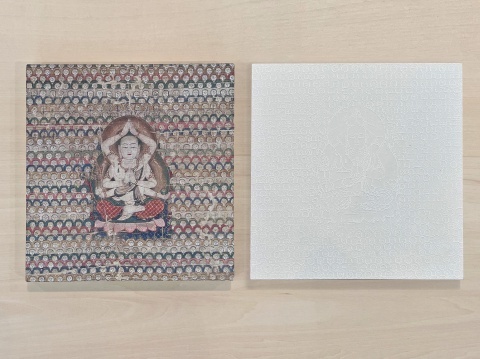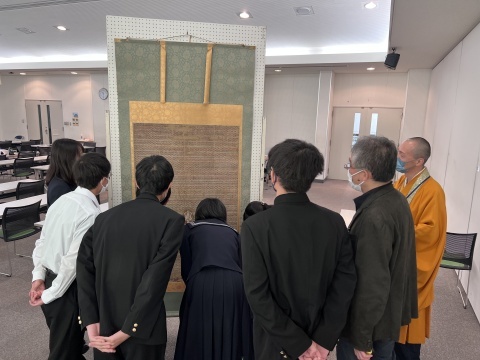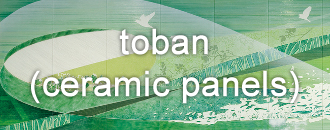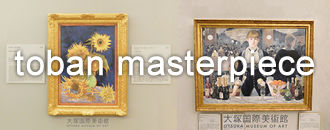On November 10 and 11, we gave a class on "Preservation and Utilization of Cultural Properties" to first-year art students at Shiga Prefectural Zeze High School, together with Mr. Fujishi, the head priest of Chojyuji Temple (Konan City, Shiga Prefecture).
This class was one of a series of five classes entitled "Knowing and Thinking about Cultural Properties: Inclusive Society and Utilization of Cultural Properties," and the third class, "How to Utilize Cultural Properties in the Future: Art and Technology," used the Buddhist painting "Mandala of Jizo" owned by Chojyuji Temple and our ceramic board reproduction of the mandala as examples, we discussed with the students the actual examples of conservation and utilization,
▶Click here for news of the unveiling of the ceramic board replica of the Jizo Mandala at Chojyuji Temple in Shiga Prefecture.
The class started by covering the ceramic board samples brought in with cloth and allowing the students to touch them under the same conditions as visually impaired people to expand their imagination. After Mr. Fujishi spoke about the history and restoration of Buddhist paintings and his thoughts on this reproduction ceramic board, our company introduced our efforts to make visually impaired people feel this work by touching the ceramic board reproduction, as well as the difficulties and persistence involved in its production.
 Ceramic board brought to the class Left: Prototype with uneven finish and transfer paper attached / Right: Prototype with uneven finish only
Ceramic board brought to the class Left: Prototype with uneven finish and transfer paper attached / Right: Prototype with uneven finish only  Students touching the ceramic board samples covered with cloth.
Students touching the ceramic board samples covered with cloth.
Students who took the class commented that they were able to feel closer to cultural properties not only by looking at them but also by touching them, and that the class gave them an opportunity to think about people with visual impairments. Mr. Yamazaki, a teacher at the school that organized the event, said, “It was a very valuable opportunity for the students to hear about the thoughts of the people who were involved in the project and the people who benefited from it, and to be able to touch the artwork through a case study of actual cooperation between a local temple and a company”.
We felt that "touch" classes, which utilize the advantages of our company's “yakimono (ceramics)”, would lead to an understanding of details that cannot be noticed by simply looking at them, as well as a familiarity with the cultural properties. We will continue to conduct activities that lead to education for a wide range of generations.
 Our staff member introducing the ceramic board to the students.
Our staff member introducing the ceramic board to the students.  Chief abbot Fujishi explains about the precious Buddhist paintings in front of the actual objects.
Chief abbot Fujishi explains about the precious Buddhist paintings in front of the actual objects.


